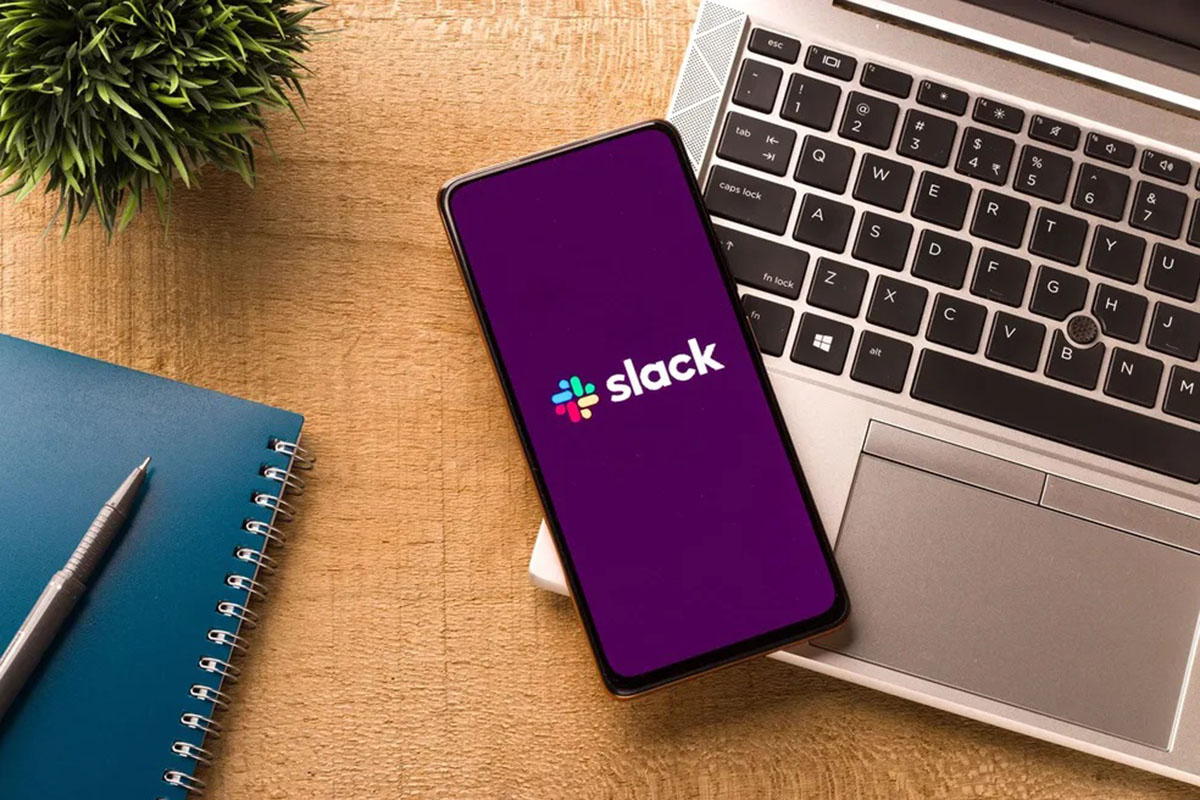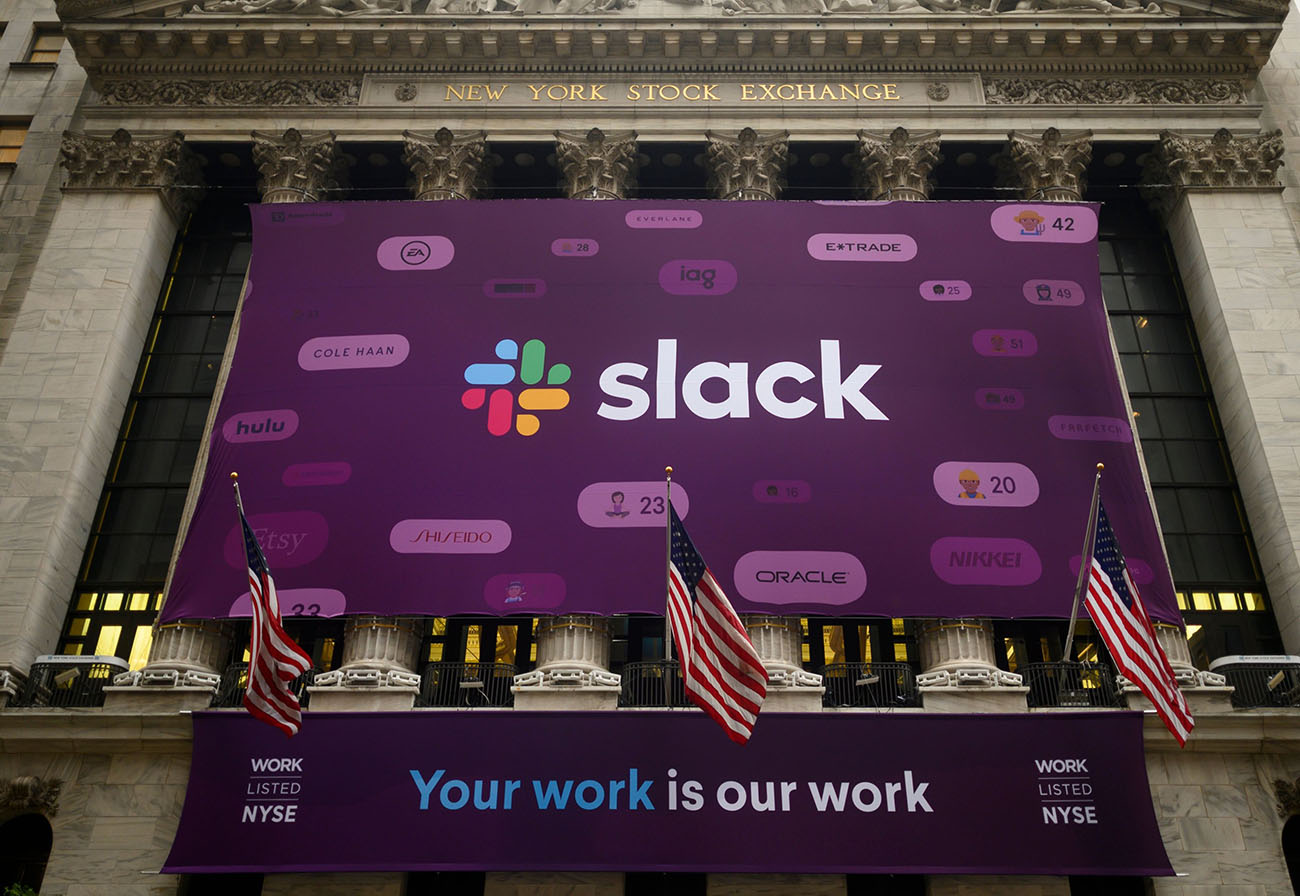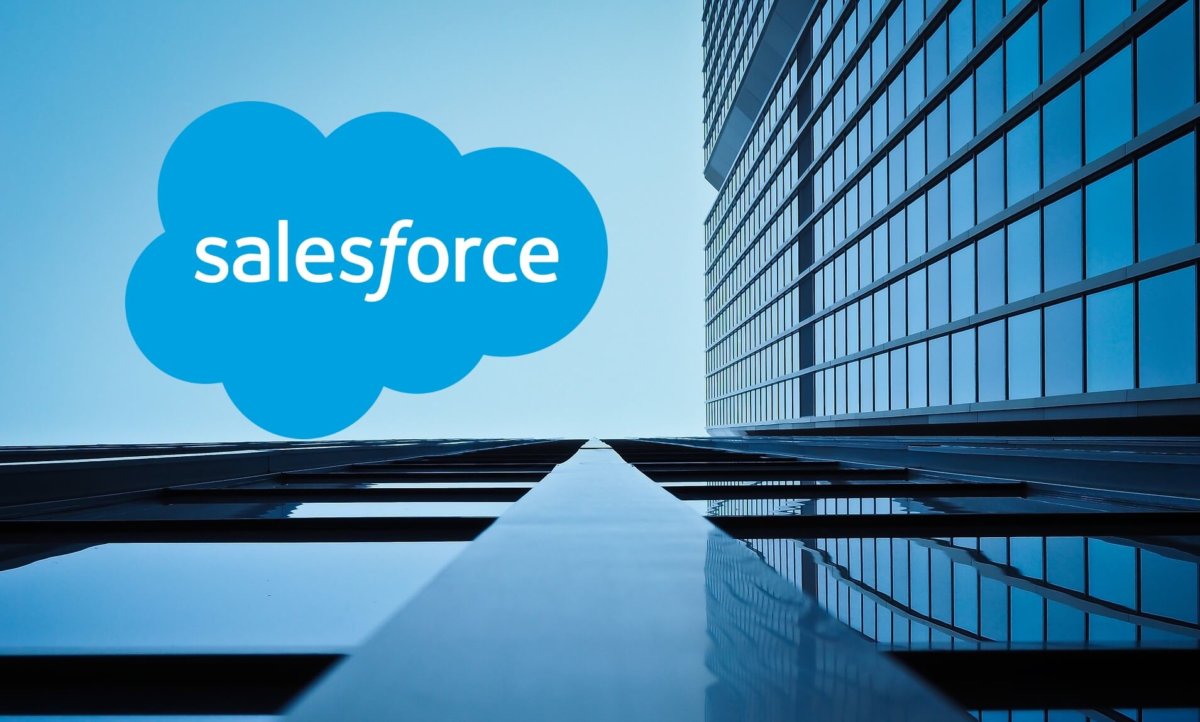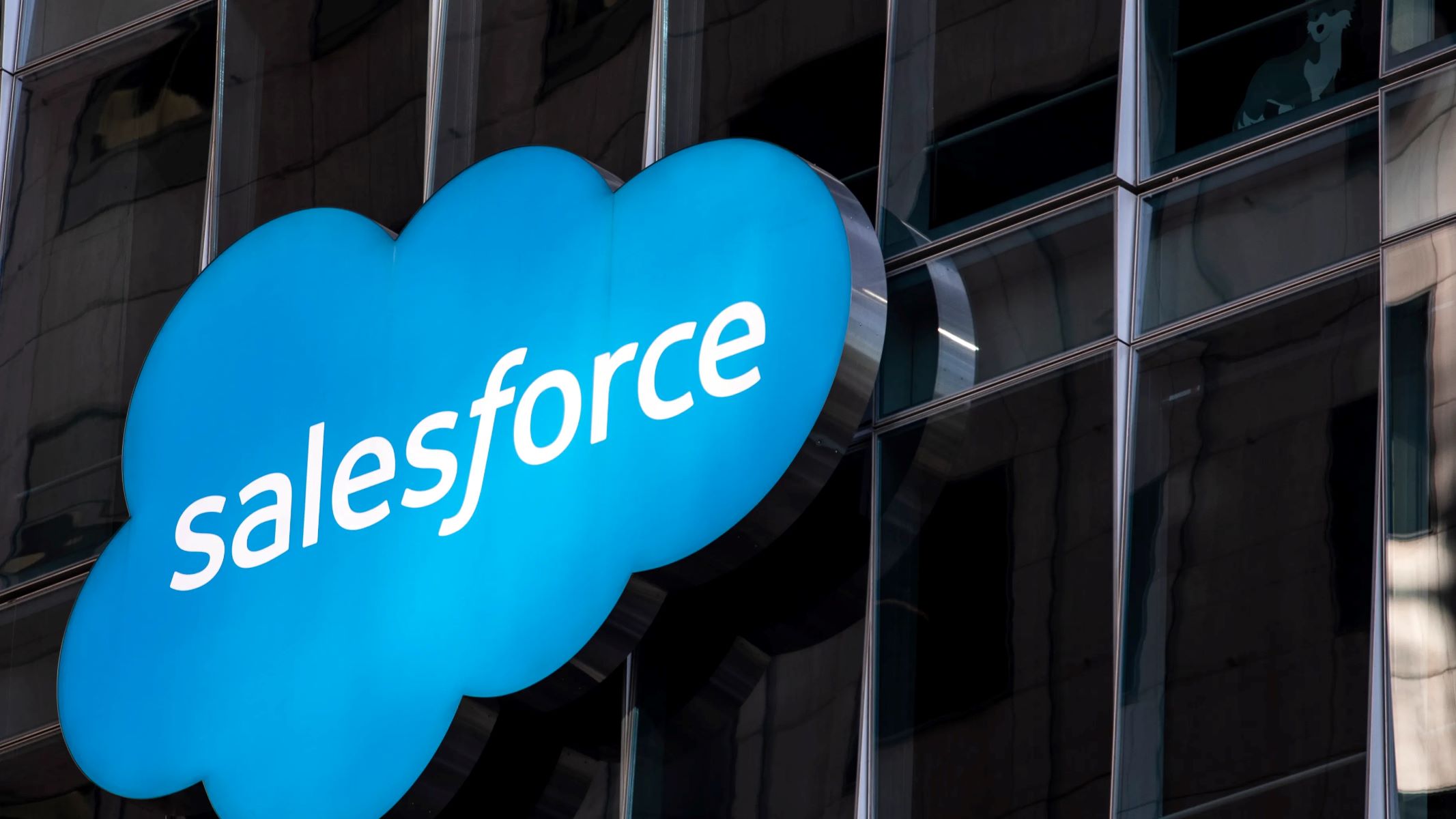Introduction
The acquisition of Slack by Salesforce, one of the industry’s leading Customer Relationship Management (CRM) platforms, has generated significant buzz and speculation among industry experts and users alike. The announcement of this groundbreaking deal sent shockwaves through the tech community and raised numerous questions about the future of collaboration software.
Slack, an innovative messaging and collaboration platform, has gained immense popularity in recent years, becoming a staple in many organizations. It has redefined the way teams communicate, collaborate, and stay connected, revolutionizing the workplace with its intuitive features and seamless integration capabilities.
Salesforce, on the other hand, is renowned for its robust suite of CRM tools that empower businesses to manage customer relationships, drive sales, and enhance overall productivity. With millions of users worldwide, Salesforce has established itself as a dominant force in the tech industry and continuously strives to expand its offerings.
The decision to acquire Slack represents a pivotal move for Salesforce, aligning with its strategy to broaden its product portfolio and further penetrate the collaboration software market. The acquisition is expected to create a formidable synergy, combining Salesforce’s expertise in sales and customer relationship management with Slack’s powerful messaging and collaboration capabilities.
This article will delve into the details of the Salesforce and Slack acquisition, exploring the background of both companies, the history of the acquisition talks, and the motivation behind Salesforce’s decision to pursue this deal. We will also examine the integration plans and potential benefits for Salesforce and Slack users, as well as the reaction from the market and industry experts. Furthermore, we will analyze the potential impacts this acquisition could have on competitors and the collaboration software market as a whole.
The Acquisition Announcement
The much-anticipated acquisition of Slack by Salesforce was officially announced on December 1, 2020. This strategic move sent shockwaves through the tech industry and garnered widespread attention. The announcement came as a surprise to many, signaling a new chapter for both companies in their quest for innovative solutions and market dominance.
The acquisition marked a significant milestone in Salesforce’s history as it aimed to further solidify its position as a leader in the software-as-a-service (SaaS) industry. With the purchase of Slack, Salesforce added a powerful collaboration tool to its portfolio, enhancing its ability to serve the evolving needs of businesses of all sizes.
According to the terms of the deal, Salesforce agreed to acquire Slack for a staggering $27.7 billion, making it one of the largest acquisitions in the tech industry to date. Under the agreement, Slack would become an operating unit of Salesforce and continue to operate independently, allowing both companies to leverage each other’s strengths while maintaining their distinct identities.
The acquisition announcement was met with mixed reactions from analysts and investors. Some expressed enthusiasm about the potential synergies between Salesforce and Slack, highlighting the mutual benefits that this partnership could bring. Others, however, raised concerns about the hefty price tag and the challenges of integrating two distinct corporate cultures.
For Slack users, the announcement raised hopes and anxieties. Many were excited about the prospect of deeper integration between Slack and Salesforce’s array of CRM tools, envisioning a seamless collaboration experience. However, some users expressed concerns about potential changes to Slack’s functionality or pricing structure, hoping that the acquisition wouldn’t compromise the core features that made Slack so popular.
Throughout the industry, the acquisition announcement ignited speculation about the future of collaboration software, intensifying the competition among tech giants in this rapidly expanding market. As organizations increasingly embrace remote work and digital collaboration, the demand for efficient and user-friendly collaboration tools has skyrocketed. With this acquisition, Salesforce aimed to position itself as a frontrunner in this space, ready to meet the growing needs of businesses worldwide.
Now, with the acquisition announcement made, both Salesforce and Slack embark on a journey to merge their strengths and capabilities, working towards a future where seamless collaboration and comprehensive customer relationship management converge. The next sections will explore the background of both companies, shedding light on their respective paths to success and the factors that led them to this groundbreaking acquisition.
Background of Salesforce and Slack
Salesforce, founded in 1999 by Marc Benioff, is a global leader in Customer Relationship Management (CRM) software. What started as a small cloud-based CRM provider has grown into a powerhouse, offering a comprehensive suite of tools designed to enhance sales, marketing, customer service, and other business functions. Salesforce’s innovative approach to CRM has revolutionized the industry, enabling businesses to better understand, manage, and engage with their customers.
Slack, founded in 2013 by Stewart Butterfield, Eric Costello, Cal Henderson, and Serguei Mourachov, is a collaboration hub that has swiftly risen to prominence. More than just a messaging platform, Slack has made teamwork and communication effortless, allowing teams to streamline their workflows, share files, and integrate with various tools. Its intuitive design, extensive integration options, and focus on enhancing productivity have made it a favorite among individuals and organizations of all sizes.
Salesforce, with its cloud-based CRM solutions, has experienced remarkable growth over the years, consistently pushing boundaries and expanding its product offerings. Its platform has become the go-to choice for many businesses seeking to optimize their customer relationships and drive sales. Salesforce’s commitment to innovation, combined with its customer-centric approach, has earned it a loyal and expansive user base.
Meanwhile, Slack emerged as a disruptor in the collaboration software space. Its user-friendly interface and emphasis on creating a seamless and efficient work environment quickly attracted attention. From startups to large enterprises, organizations flocked to Slack to communicate with team members, collaborate on projects, and streamline their workflows. Slack’s ability to integrate with various tools and platforms, fostering a unified and connected experience, set it apart from traditional communication channels.
Both Salesforce and Slack have a strong reputation for prioritizing user experience and driving digital transformation. Salesforce’s success can be attributed to its deep understanding of customer needs and dedication to continually improving its CRM solutions. Slack’s rapid rise in popularity can be attributed to its commitment to simplifying collaboration and fostering a culture of productivity.
As the digital landscape continues to evolve, businesses are recognizing the importance of effective collaboration and streamlined customer relationship management. Salesforce’s acquisition of Slack represents a strategic move to combine the expertise and offerings of two industry leaders, creating a powerful suite of tools that cater to the diverse needs of modern businesses. The next section will explore the history of the acquisition talks between Salesforce and Slack, shedding light on how this monumental deal came to fruition.
The History of the Acquisition Talks
The acquisition talks between Salesforce and Slack can be traced back to early 2020, when rumors about a potential partnership started circulating in the tech industry. At the time, Salesforce was actively seeking opportunities to expand its product portfolio and strengthen its position in the collaboration software market. Meanwhile, Slack was exploring options to ensure its long-term growth and competitiveness.
Initial discussions between the leadership teams of Salesforce and Slack focused on potential integration opportunities and shared visions for the future of workplace collaboration. As both companies recognized the synergies between their offerings, the possibility of a strategic partnership began to take shape.
Throughout the year, the talks gained momentum, with executives from both companies engaging in detailed negotiations. These discussions involved exploring various deal structures and financial terms that would be mutually beneficial and satisfactory to all parties involved.
Ultimately, in late 2020, the negotiations reached a critical turning point when an agreement was reached. Salesforce made a jaw-dropping offer to acquire Slack for $27.7 billion, a testament to the value placed on the collaboration platform and the potential it held in transforming the way businesses operate.
The acquisition talks were not without their share of challenges and potential roadblocks. Some analysts speculated about the possibility of other tech giants entering the fray and making competitive offers for Slack. However, Salesforce’s strong reputation, financial strength, and strategic vision positioned it as the frontrunner in the race to acquire Slack.
While the details of the discussions remain confidential, it is clear that the acquisition talks were driven by a mutual recognition of the opportunities that combining Salesforce’s CRM expertise with Slack’s collaboration capabilities could unleash. Both companies saw the potential to create a comprehensive suite of tools that would enable businesses to seamlessly connect customer relationship management with efficient team collaboration.
With the acquisition talks successfully concluded, the focus shifted to obtaining the necessary regulatory approvals and finalizing the legal aspects of the deal. Throughout this process, both Salesforce and Slack assured their users that the integration would be carried out thoughtfully, with a commitment to preserving the core features and functionalities that made Slack so beloved by millions of individuals and organizations.
Now that we understand the background and history of the acquisition talks, the next section will explore the motivations driving Salesforce’s decision to pursue this transformative acquisition.
Salesforce’s Motivation to Acquire Slack
The decision for Salesforce to acquire Slack was driven by several key motivating factors that aligned with its long-term strategic goals. By incorporating Slack’s collaboration platform into its existing suite of CRM tools, Salesforce aimed to enhance its offerings and solidify its position as a leader in the digital workplace.
One of the primary motivations behind the acquisition was the opportunity to create a more seamless and connected user experience. Salesforce recognized the growing demand for integrated solutions that bring together customer relationship management and team collaboration. By integrating Slack’s messaging and collaboration capabilities with Salesforce’s CRM platform, users would be able to effortlessly communicate, collaborate, and access customer information all within one unified ecosystem.
Moreover, Slack’s extensive integration capabilities were highly appealing to Salesforce. With a rich ecosystem of over 2,400 apps and integrations, Slack allows users to connect and leverage various tools and platforms. This aligns perfectly with Salesforce’s commitment to providing a comprehensive suite of solutions that cater to the diverse needs of businesses. The acquisition would enable Salesforce to offer an even more extensive range of integrations, allowing users to further streamline their workflows and work more efficiently.
Another key motivation for Salesforce to acquire Slack was to expand its addressable market. Salesforce has traditionally focused on sales, marketing, and customer service functions, but with the addition of Slack, it broadens its reach to encompass team collaboration and workplace productivity. This not only allows Salesforce to tap into new revenue streams but also positions the company to provide a more holistic solution for organizations, addressing their needs beyond customer relationship management.
Furthermore, Salesforce recognized the potential for synergy between its existing customer base and Slack’s user community. By integrating Slack’s collaboration platform into the Salesforce ecosystem, it could deepen customer engagement and build stronger relationships with its user community. This integration could also attract new customers who are looking for a comprehensive solution that combines customer relationship management and collaboration.
Lastly, the acquisition of Slack was a strategic move by Salesforce to stay competitive in the rapidly evolving world of work. With the shift towards remote work and distributed teams, the demand for robust and intuitive collaboration tools has never been higher. By acquiring Slack, Salesforce positioned itself at the forefront of this digital transformation, ready to empower organizations to adapt to new work paradigms and embrace the future of work.
By understanding Salesforce’s motivation to acquire Slack, we can now delve into the details of the acquisition deal and the integration plans that will shape the future of these two tech giants.
Details of the Acquisition Deal
The acquisition deal between Salesforce and Slack, announced on December 1, 2020, was a monumental transaction that solidified Salesforce’s commitment to expanding its product offerings and capitalizing on the growing demand for collaboration software. The deal, valued at $27.7 billion, marked one of the largest acquisitions in the tech industry’s history.
Under the terms of the agreement, Slack would become an operating unit within Salesforce, allowing both companies to collaborate while maintaining their distinct identities. This strategic move aimed to leverage the strengths and expertise of both Salesforce’s CRM solutions and Slack’s collaboration platform.
Slack’s co-founder and CEO, Stewart Butterfield, expressed optimism about the acquisition, stating that the partnership with Salesforce would accelerate Slack’s mission to make work more productive, fulfilling, and enjoyable for users worldwide. The acquisition was seen as an opportunity to unlock significant value for customers, expand market reach, and drive innovation in the collaboration software space.
From a financial perspective, the deal involved a combination of cash and stock. Slack shareholders would receive $26.79 in cash and 0.0776 shares of Salesforce common stock for each Slack share. While this represented a premium for Slack shareholders, it also provided them with an opportunity to participate in the future success of Salesforce.
From an operational standpoint, the integration process between Salesforce and Slack would be a critical focus. Salesforce assured users that the integration would be carried out thoughtfully, with a commitment to preserving the core features and functionalities that made Slack so beloved. The goal was to create a seamless experience for users, enabling them to access their CRM data and collaborate seamlessly within the Slack platform.
Additionally, Salesforce and Slack committed to maintaining Slack as an open and independent platform that interoperates with various third-party applications and platforms. This open approach aimed to preserve the extensive integration capabilities that made Slack a favorite among users and underscored Salesforce’s commitment to interoperability and choice.
Overall, the details of the acquisition deal demonstrated Salesforce’s dedication to leveraging Slack’s collaboration capabilities and integrating them into its CRM ecosystem. The combination of Salesforce’s industry-leading CRM tools with Slack’s intuitive messaging and collaboration platform created a compelling value proposition for businesses of all sizes.
With the acquisition deal finalized, the focus now shifted to the integration plans and the potential benefits for both Salesforce and Slack users. The next section will explore these integration plans as well as the benefits that users can expect from this transformative partnership.
Integration Plans and Benefits for Salesforce and Slack Users
The acquisition of Slack by Salesforce signifies a new era of collaboration and productivity for users of both platforms. The integration plans between the two companies aim to create a seamless experience where Salesforce’s CRM tools and Slack’s collaboration capabilities converge, providing users with unprecedented efficiency and connectivity.
One of the key integration plans involves embedding Slack’s messaging and collaboration features directly within the Salesforce platform. This means that users will be able to communicate, collaborate, and share information seamlessly without leaving their CRM workspace. The integration aims to eliminate the need to switch between applications, saving users valuable time and enhancing productivity.
Furthermore, the integration will enable the synchronization of data between Salesforce and Slack, allowing users to access and update customer information directly from within the collaboration platform. This integration of CRM data within the collaboration workflow offers a holistic view of customer interactions and enables teams to make informed decisions and provide personalized customer experiences.
For Salesforce users, the integration with Slack opens up new avenues for team collaboration. Teams can create dedicated Slack channels linked to specific Salesforce records such as accounts, opportunities, or leads. This seamless connection ensures that relevant team members are notified in real-time when updates or actions are performed in Salesforce, fostering better collaboration, and enabling more efficient cross-functional teamwork.
On the other hand, Slack users can expect to benefit from deeper integration with Salesforce’s CRM tools. The ability to pull in relevant CRM data directly into Slack channels provides context and insights to team discussions and decisions. Real-time updates from Salesforce, such as deal closures or customer interactions, can be shared with the team, ensuring everyone is up to date and informed.
Another major benefit for both Salesforce and Slack users is the expansion of integration possibilities with other third-party applications. While Slack already offered a vast ecosystem of integrations, the acquisition by Salesforce opens up new integration opportunities with the extensive range of apps available on the Salesforce AppExchange. This allows users to customize and tailor their workflows to their specific needs, further enhancing productivity and collaboration.
Moreover, the acquisition of Slack by Salesforce brings together two communities of users, creating a vibrant ecosystem where knowledge sharing and best practices can thrive. Companies can learn from each other’s experiences, exploring new ways to leverage both Salesforce’s CRM solutions and Slack’s collaboration platform. This collaboration and cross-pollination of ideas are expected to drive innovation and deliver even greater value for users of both platforms.
In summary, the integration plans between Salesforce and Slack aim to seamlessly amalgamate CRM capabilities with collaboration features, providing users with enhanced productivity, streamlined workflows, and improved customer engagement. The next section will explore the reaction and implications of the Salesforce and Slack acquisition on the market and industry experts.
Reaction from Market and Industry Experts
The acquisition of Slack by Salesforce sent shockwaves through the market and garnered significant attention from industry experts and analysts. The reaction to the deal was mixed, with varying opinions regarding the potential impact and implications of this groundbreaking acquisition.
Many analysts and market observers expressed enthusiasm about the acquisition, seeing it as a strategic move that positioned Salesforce at the forefront of the collaboration software market. They highlighted the synergies between Salesforce’s CRM expertise and Slack’s collaboration capabilities, envisioning a powerful combination that would empower businesses to streamline their workflows and enhance productivity.
Industry experts praised the integration potential between Salesforce and Slack, emphasizing the benefits of a seamless connection between customer relationship management and team collaboration. They saw the acquisition as a response to the evolving needs of businesses in an increasingly digital and remote work landscape, where effective collaboration and centralized customer data are crucial for success.
Moreover, market analysts speculated that the acquisition could potentially lead to increased market share for Salesforce and create more growth opportunities. By adding Slack to its product portfolio, Salesforce would be able to attract new customers and tap into new segments of the collaboration software market, expanding its reach beyond its traditional CRM domain.
While there were optimistic views, some industry experts raised concerns about the daunting task of integrating two large and distinct corporate cultures. They highlighted the potential challenges of aligning different working styles, managerial structures, and operational processes. However, they acknowledged that with careful planning and collaboration, it was feasible to overcome these obstacles and drive the combined entity towards success.
Some analysts also commented on the substantial price tag of the acquisition, expressing caution about the return on investment and the potential financial impact on Salesforce. However, others argued that the strategic value and long-term benefits outweighed the initial costs, positioning Salesforce as a leader in the collaboration software market.
Implications for competitors in the collaboration software market were also a topic of discussion. Industry experts speculated how other tech giants offering collaboration tools, such as Microsoft Teams and Google Workspace, would respond to the Salesforce and Slack acquisition. They anticipated increased competition and a potential shift in dynamics within the collaboration software landscape.
Overall, the reaction from the market and industry experts to the Salesforce and Slack acquisition was a mix of anticipation, excitement, and cautious optimism. The potential for enhanced collaboration, streamlined workflows, and integrated customer relationship management capabilities fueled enthusiasm for the deal, while acknowledging the challenges of integration and competition in the market.
With such a significant acquisition, the collaboration software market is poised for further evolution and transformation as industry players aim to keep pace with the changing needs and demands of businesses worldwide.
Potential Impacts on Competitors and the Collaboration Software Market
The acquisition of Slack by Salesforce is expected to have far-reaching implications on competitors in the collaboration software market, as well as the overall landscape of digital collaboration tools. The deal solidifies Salesforce’s position as a major player in this space and introduces a new level of competition among tech giants offering similar solutions.
One of the immediate impacts of the acquisition is the intensified competition between Microsoft Teams, Google Workspace, and the combined Salesforce-Slack entity. Microsoft Teams has emerged as a dominant force in the collaboration software market, and the Salesforce-Slack partnership presents a formidable challenge. The acquisition provides Salesforce with a more comprehensive offering, allowing it to compete more directly with Microsoft’s integrated suite of productivity tools.
Google, with its wide range of productivity and collaboration tools like Google Drive and Google Meet, also faces increased competition. The Salesforce-Slack integration presents a compelling alternative for businesses looking for a seamless connection between customer relationship management and collaboration. Google will need to continue innovating to differentiate its offerings and maintain its market share.
Furthermore, the acquisition of Slack by Salesforce is expected to further accelerate the consolidation trend in the collaboration software market. Large tech companies with robust platforms and established user bases are increasingly recognizing the importance of offering end-to-end solutions that encompass both customer relationship management and team collaboration. This may prompt further acquisitions, partnerships, or even the development of internal collaboration tools by other major players to remain competitive.
The acquisition also raises questions about the future of standalone collaboration platforms. Smaller companies specializing in team communication and collaboration may face challenges as customers increasingly gravitate towards integrated solutions. To compete, these standalone providers will need to demonstrate unique value propositions and niche offerings that differentiate them from the integrated suites offered by larger players in the market.
On the other hand, the Salesforce-Slack acquisition presents opportunities for other collaboration software providers. Companies that offer complementary products or specialize in specific industries or use cases may find themselves in demand as organizations seek to augment their collaboration workflows with specialized tools. This includes companies focusing on project management, document collaboration, virtual events, and workflow automation, among others.
Overall, the acquisition of Slack by Salesforce reshapes the collaboration software market, fueling competition and driving further innovation. It underscores the increasing importance of seamless integration between customer relationship management and team collaboration, forcing competitors to deliver more comprehensive and compelling solutions. The landscape will continue to evolve as organizations evaluate their collaboration needs and seek out the tools and platforms that best align with their business objectives.
As the market adapts to the shifting dynamics, businesses will have more options and opportunities to harness the power of collaboration software to drive productivity, enhance customer interactions, and stay ahead of the competition.
Conclusion
The acquisition of Slack by Salesforce marks a significant milestone in the collaboration software market. The synergies between Salesforce’s CRM expertise and Slack’s powerful collaboration platform present immense potential for businesses worldwide.
This article explored the journey of the Salesforce and Slack acquisition, starting with the acquisition announcement and delving into the background of both companies. We examined the history of the acquisition talks, Salesforce’s motivation for pursuing this deal, and the details of the acquisition agreement.
We also discussed the integration plans between Salesforce and Slack, highlighting the benefits for users of both platforms. The seamless connection of CRM capabilities and collaboration features promises to streamline workflows, enhance productivity, and foster a more connected and efficient workplace.
The reaction from the market and industry experts was a mix of excitement, anticipation, and cautious optimism. While there were concerns about integration challenges and competition, many recognized the transformative potential of the acquisition and its implications for the collaboration software market.
The acquisition of Slack by Salesforce is expected to have significant impacts on competitors, driving increased competition and potential consolidation in the collaboration software market. It also opens up opportunities for smaller specialized providers to carve out their niche amidst the growing demand for specific collaboration tools.
As businesses adapt to evolving work paradigms and seek comprehensive solutions that integrate customer relationship management with team collaboration, the collaboration software market will continue to evolve and innovate. Organizations will have more options to choose from, enabling them to find the tools that best align with their needs and drive their productivity and success.
Overall, the Salesforce and Slack acquisition sets the stage for a future where connected collaboration and seamless customer relationship management converge. It is an exciting time for businesses as they embrace the transformative power of collaboration software to fuel their growth, drive innovation, and forge closer connections with their customers.

























